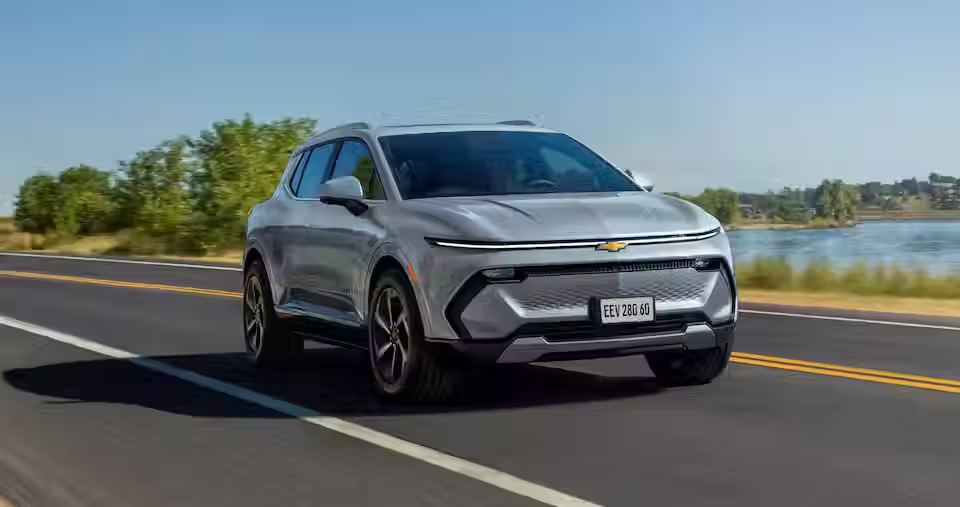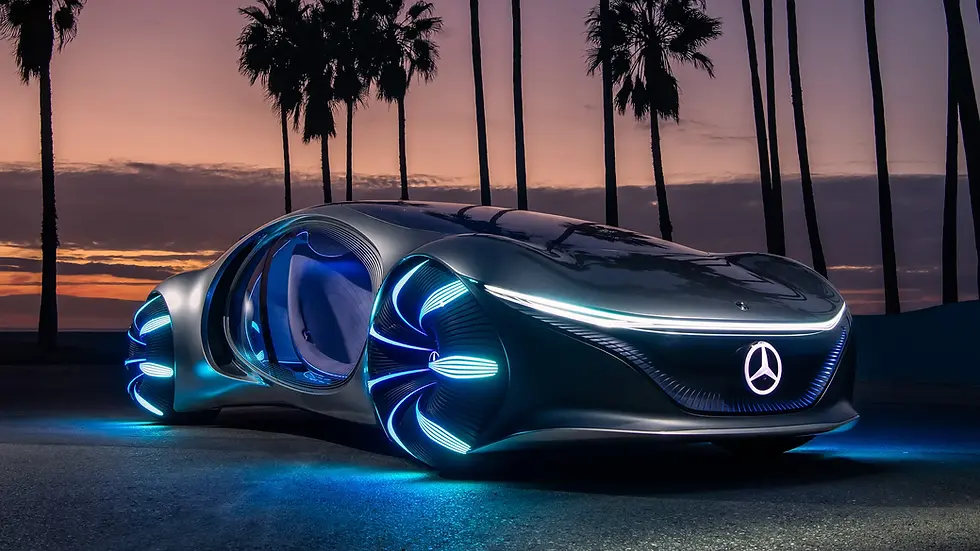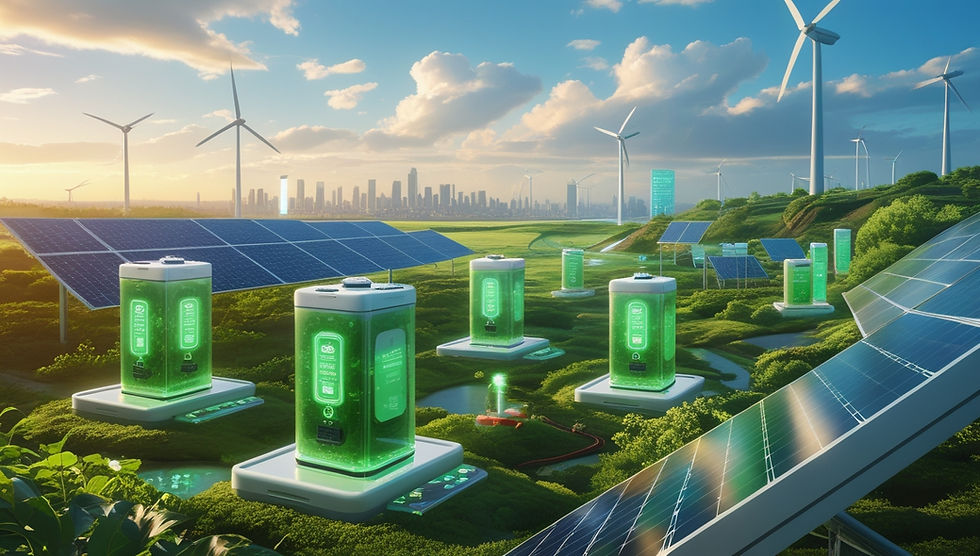Electric Cars: How Sustainable Are They Really? Options in U.S.
- Nexxant

- Jun 24
- 13 min read
Electric Cars: Sustainable Solution or Greenwashing?
The rise of electric cars in recent years is more than just a technological trend—it represents a market transformation driven by strong environmental appeal. From established automakers like Volkswagen, Hyundai, and Nissan, to emerging players such as BYD from China, the global race for dominance in sustainable mobility is accelerating.

In the United States, the growth in electric vehicle sales has been equally impressive. According to the U.S. Department of Energy, models like the Tesla Model 3, Nissan Leaf, and Chevrolet Bolt EV continue to gain market share, alongside newer entries like the Ford Mustang Mach-E and the Hyundai Ioniq 5.
At the same time, hybrid vehicles and plug-in hybrid electric vehicles (PHEVs) offer intermediate solutions, promising to combine the best of both worlds: fuel efficiency and lower emissions. However, behind this automotive revolution, an uncomfortable question remains: Are electric cars truly sustainable when evaluated across their entire life cycle?
This article offers a realistic and data-driven analysis to assess whether the electric vehicle truly delivers on its sustainability promise.
1. What’s Behind Electric Car Technology?
1.1 Key Technological Components
Unlike vehicles powered by fossil fuels, the electric car relies on a combination of technologies that completely redefine the concept of automotive propulsion.
At the heart of this innovation is the electric motor, which converts electrical energy into motion with high efficiency. Leading manufacturers like Tesla, Nissan, and Volkswagen have invested billions in research and development to improve the power-to-weight ratio and reduce thermal losses in their electric motors.
Another vital component is the battery, typically using lithium-ion chemistry. Companies like CATL, LG Energy Solution, and Panasonic lead global battery production. In the U.S. market, models like the Volvo XC40 Recharge, Ford F-150 Lightning, and the Chevrolet Bolt EV feature battery capacities ranging from 40 kWh to over 100 kWh, delivering increasingly competitive driving ranges.
In addition, electric vehicles include power inverters that regulate energy flow between the battery and the electric motor, as well as regenerative braking systems that recover kinetic energy during deceleration.
In contrast, the plug-in hybrid electric vehicle (PHEV) combines an electric motor with an internal combustion engine, offering greater flexibility in driving range. Popular hybrid vehicle examples in the U.S. include the Toyota Prius Prime, Ford Escape Plug-in Hybrid, and the Hyundai Ioniq Plug-in Hybrid.
1.2 Differences Between Electric, Hybrid, and Traditional Combustion Vehicles
Understanding the differences between electric cars, hybrid vehicles, and conventional gasoline-powered cars is essential before evaluating sustainability.
Battery Electric Vehicle (BEV): Powered exclusively by an electric motor and battery pack. Produces zero tailpipe emissions during operation.
Hybrid Electric Vehicle (HEV): Uses both an electric motor and an internal combustion engine. The electric energy is typically generated through regenerative braking or by the engine itself.
Plug-in Hybrid Electric Vehicle (PHEV): Can be charged via an external power source and drive short distances using only electricity, such as the Volvo XC40 Recharge Plug-in Hybrid.
Traditional Internal Combustion Engine Vehicle (ICE): Runs entirely on fossil fuels like gasoline or diesel.
This technical distinction is critical because each vehicle type carries a different environmental impact and carbon footprint over its complete life cycle.
2. Carbon Footprint in Production: The Environmental Impact Before the First Mile

2.1 Mining and Environmental Impacts of Lithium, Cobalt, and Nickel Extraction
One of the most critical factors in evaluating the sustainability of electric cars is the environmental footprint associated with battery production. Essential materials such as lithium, cobalt, and nickel are indispensable for the lithium-ion batteries used in models like the Kia EV6, Audi e-tron, and the Fiat 500e—all available in the U.S. market.
Lithium extraction, for example, is heavily concentrated in regions like Bolivia's Salar de Uyuni and Chile's Atacama Desert, where the process consumes massive volumes of water in already arid ecosystems. Cobalt, on the other hand, is primarily sourced from the Democratic Republic of Congo, a country frequently cited in Amnesty International reports for poor labor conditions and child labor exploitation.
From a climate perspective, studies by the International Council on Clean Transportation (ICCT) indicate that producing a 64 kWh battery can generate anywhere between 3 to 16 metric tons of CO₂, depending on the extraction methods and the energy mix used in the manufacturing process.
Manufacturers like Tesla and Volkswagen have announced initiatives for more responsible mining practices as part of their ESG (Environmental, Social, and Governance) programs. Still, the challenge of reducing the upstream environmental impact of electric vehicle production remains far from fully resolved.
2.2 Electric Car Manufacturing: Emissions from Production
Beyond mining, the manufacturing of an electric car consumes more energy and emits significantly more CO₂ than building a traditional gasoline vehicle. Estimates suggest that producing an electric vehicle can emit 50% to 70% more CO₂ compared to a similar internal combustion engine (ICE) vehicle—just during the assembly phase.
The main culprit is the production of high-capacity batteries. Automakers like BYD, Hyundai, Renault, and Volkswagen, all active in global EV markets, have been investing in facilities powered by renewable energy to minimize this impact.
For example, Audi’s factory in Brussels, responsible for the Audi e-tron line, operates with 100% renewable energy, according to company reports. Similarly, Volvo, in producing the Volvo XC40 Recharge, has adopted measures to reduce its manufacturing carbon footprint.
Despite these advancements, a study conducted by the Massachusetts Institute of Technology (MIT) reinforces that, on average, manufacturing an electric car still generates around 7 metric tons of CO₂ before the vehicle drives its first mile—compared to approximately 4.5 metric tons for a gasoline car.
This is a crucial factor to consider before labeling any electric vehicle as a truly sustainable solution.
3. During Use: Energy Efficiency and Power Source
When evaluating the environmental performance of electric cars during their operational phase, it's common to see claims positioning them as "zero-emission" solutions. Indeed, while driving, an electric vehicle emits no tailpipe CO₂ or other exhaust pollutants. However, this isolated analysis can be misleading if we ignore the source of the electricity powering the vehicle.
3.1 Zero Tailpipe Emissions—But Where Does the Energy Come From?
A major advantage for electric car owners in Brazil is the country's predominantly renewable energy grid. According to Brazil’s National Electric Energy Agency (ANEEL), approximately 83% of the country's electricity comes from hydropower, wind, solar, and biomass sources. This makes operating an electric vehicle there substantially cleaner in terms of indirect emissions.
The scenario is quite different in markets like China and the United States. In China, despite growing investments in renewable energy, over 57% of electricity generation still relies on coal, as reported by the International Energy Agency (IEA) in 2024. This means that many Chinese electric cars, while emission-free at the tailpipe, are indirectly powered by fossil fuels.
In the United States, the energy mix is more diversified but still heavily dependent on fossil fuels in many regions. According to the U.S. Energy Information Administration (EIA), roughly 60% of electricity generation in several states still comes from natural gas and coal. However, states like California are exceptions, with a significant share of solar and wind energy.
This highlights an often-overlooked technical reality: the environmental impact of an electric car depends directly on how and where the electricity is generated. Therefore, when considering the purchase of an electric vehicle, it’s essential to evaluate your local energy grid.
3.2 Efficiency Comparison: Gallons vs. Kilowatt-Hours per Mile
Another critical aspect of sustainability analysis for electric vehicles is energy efficiency. Compared to a traditional gasoline car, an electric car offers significant advantages in energy conversion.
While gasoline and diesel engines typically achieve thermal efficiencies of 25% to 30%, electric motors can exceed 90% efficiency in converting electrical energy into motion. This means that, for the same energy input, an electric vehicle covers a greater distance with less energy loss.
In simple terms:
A conventional gasoline vehicle consumes about 7 to 10 liters (approximately 1.8 to 2.6 gallons) per 100 kilometers (about 62 miles), translating to roughly 170 to 250 grams of CO₂ per kilometer.
An electric car, depending on the model, uses around 15 to 20 kWh to cover the same distance, resulting in indirect CO₂ emissions ranging from 0 to 120 grams per kilometer, depending on the energy mix.
Tests conducted by the Lawrence Berkeley National Laboratory (LBNL) and the U.S. Environmental Protection Agency (EPA) on models like the Nissan Leaf, Tesla Model 3, and Hyundai Kona Electric show that, even in fossil-fuel-heavy states, electric vehicles still outperform similar-sized gasoline SUVs in terms of emissions.
However, factors like terrain, driving behavior, and weather conditions significantly influence performance. In extremely cold regions, for example, energy consumption can increase by up to 30% due to heavy use of cabin heaters and reduced battery efficiency.
Additionally, vehicle weight plays a crucial role. Smaller models like the Chevrolet Bolt EV, one of the most affordable electric cars in the U.S., tend to have better urban efficiency compared to larger electric SUVs like the Ford Mustang Mach-E or the Audi e-tron, which naturally consume more energy per mile.
This variation reinforces the importance of evaluating your driving profile before choosing between a compact EV, a plug-in hybrid electric vehicle, or a larger electric SUV.
4. End-of-Life: Recycling, Reuse, and Final Challenges
When discussing sustainability, it’s essential to look beyond the operational phase of an electric car. The disposal and repurposing of high-capacity batteries remain some of the most critical and least discussed challenges in the transition to electric mobility.

4.1 Battery Lifespan: Myths and Realities
The lifespan of an electric vehicle (EV) battery is influenced by several factors: number of charge cycles, depth of discharge, operating temperature, and the quality of the Battery Management System (BMS).
Models like the Nissan Leaf, a global pioneer in electrification, use lithium cells with an expected lifespan of around 1,500 full charge cycles. In real-world terms, this equates to 8 to 10 years of moderate use before battery capacity falls below 70% of its original level, often considered the lower threshold for automotive use.
Manufacturers like Tesla, Volkswagen, BYD, and Hyundai are investing heavily in new battery chemistries, such as Lithium Iron Phosphate (LFP), known for offering greater durability with less degradation over time. For example, the Tesla Model 3 Standard Range now uses LFP technology for improved longevity and cost-effectiveness.
However, battery replacement remains a significant cost factor. In the U.S., replacing a battery pack in a premium EV like the Audi e-tron or the Volvo XC40 Recharge can exceed $15,000, depending on the dealership and warranty coverage.
4.2 Battery Recycling: Current Technologies and Limitations
The final destination of EV batteries poses one of the automotive industry's biggest environmental challenges. The battery recycling process still faces technical, logistical, and economic barriers.
Currently, three main recycling methods are used:
Hydrometallurgical recovery: Chemical dissolution to extract valuable metals like lithium, nickel, and cobalt.
Pyrometallurgical process: High-temperature smelting to recover metallic components, though some materials are lost due to heat sensitivity.
Direct recycling (closed-loop process): Focuses on recovering active materials from battery cells with minimal chemical transformation.
Global leaders in the field include Umicore, Li-Cycle, and Redwood Materials, the latter founded by a former Tesla executive. In North America, several new recycling facilities are being developed to handle the growing volume of end-of-life EV batteries.
Despite these advancements, the current recovery rates for lithium and other critical metals remain low, typically between 40% and 60%, depending on the recycling technology used.
Beyond traditional recycling, the concept of second-life applications is gaining traction. Batteries from electric cars that no longer meet automotive performance standards are being repurposed for stationary energy storage, supporting renewable energy integration in homes and utility grids.
5. Life Cycle Assessment (LCA): When Does an EV Truly Become Sustainable?
One of the most important criteria for evaluating the sustainability of an electric car is the Life Cycle Assessment (LCA). This method examines all phases: raw material extraction, manufacturing, vehicle use, and end-of-life disposal.
5.1 Emissions Comparison: From Cradle to Grave
Studies from reputable institutions like the Massachusetts Institute of Technology (MIT) and the European Environment Agency (EEA) indicate that an electric vehicle can produce 20% to 30% less CO₂ equivalent over its lifetime compared to a gasoline car—assuming the electricity used comes from renewable sources.
A typical emissions scenario looks like this:
Vehicle Type | Production Emissions (tons CO₂) | Use Phase Emissions (tons CO₂ – 93,000 miles) | Total Life Cycle Emissions |
Gasoline Car | 6 | 30 | 36 |
Electric Car (Clean Grid) | 9 | 4 | 13 |
Electric Car (Fossil Fuel Grid) | 9 | 20 | 29 |
As shown, even with a fossil-fuel-heavy grid, the electric car tends to be environmentally less impactful over its lifetime. However, the benefits only become significant after a substantial driving distance.
5.2 Critical Threshold: How Many Miles Until an EV Pays Off Environmentally?
The key question remains: At what point does an electric car offset its higher production emissions?
Research from Transport & Environment, based in the European Union, suggests that on average, an electric vehicle starts delivering clear environmental advantages after about 30,000 to 45,000 miles, depending on the energy mix.
In regions with cleaner energy grids—such as parts of California or the Pacific Northwest—this break-even point can drop to around 20,000 miles.
However, several variables can shift this calculation:
Battery size: Larger batteries have a higher initial carbon footprint.
Vehicle type: An electric SUV generally weighs more and consumes more energy than a compact hatchback.
Usage profile: Urban driving, highway mileage, climate conditions, and driving habits all affect overall emissions.
Notably, affordable electric cars like the Chevrolet Bolt EV tend to reach carbon parity sooner than premium models like the Audi e-tron or the Volvo XC40 Recharge, thanks to smaller battery packs and lower energy consumption per mile.
6. Electric Vehicle Options in the U.S.: Models, Brands, and Price Ranges
When analyzing the sustainability of an electric car, it's impossible to ignore the market context. The variety of electric vehicles (EVs) available in the U.S. has expanded significantly in recent years, offering options ranging from affordable entry-level models to premium electric SUVs and sedans. Understanding what’s available—and at what price range—helps consumers make more informed decisions that balance environmental benefits and financial considerations.
6.1 Most Affordable Electric Car Models
For those looking to invest in an electric vehicle with an emphasis on affordability, the U.S. market offers several standout models among the cheapest electric cars available today.
Chevrolet Bolt EV

Offered by General Motors, the Chevrolet Bolt EV remains one of the most affordable electric cars in the U.S., with starting prices around $27,000 to $30,000 (as of mid-2025). The Bolt EV delivers an EPA-estimated range of about 259 miles, making it suitable for both urban and suburban driving.
Its electric motor produces 200 horsepower, providing a surprisingly quick acceleration for a compact hatchback.
Nissan Leaf

A pioneer in the EV space, the Nissan Leaf continues to offer value for budget-conscious buyers. Priced between $29,000 and $37,000, depending on the trim, the Leaf offers a range between 150 and 212 miles, depending on the battery size.
The Leaf also features regenerative braking and supports Level 2 and DC fast charging, making it a practical choice for city commuting.
Mini Cooper SE Electric

For drivers who prioritize style and compact design, the Mini Cooper SE Electric starts at approximately $31,000. Though it offers a more limited range of about 114 miles, its unique design and nimble handling make it appealing for short-distance, urban-focused drivers.
6.2 Affordable Electric SUVs and Other Utility EV Options
For those needing more interior space or light off-road capability, electric SUVs and other electric utility vehicles are gaining traction across the U.S.
Hyundai Kona Electric

The Hyundai Kona Electric is a standout among affordable electric SUVs, with starting prices around $34,000 to $38,000. It offers a range of approximately 258 miles, along with strong thermal battery management, crucial for performance in varying U.S. climates.
Hyundai’s investment in EV technology has made the Kona Electric a highly competitive choice in the compact SUV segment.
Chevrolet Equinox EV

Recently introduced, the Chevrolet Equinox EV targets budget-conscious SUV buyers. With prices expected to start around $34,000, it offers a target range of up to 300 miles, positioning it as an affordable, family-friendly electric SUV.
Ford Mustang Mach-E
The Ford Mustang Mach-E provides a more performance-oriented option in the mid-size SUV category. Prices range from $43,000 to $65,000, depending on battery size and trim level. With EPA-estimated ranges between 247 and 312 miles, the Mach-E appeals to those looking for sporty driving dynamics in an electric SUV.
6.3 Premium and High-End Electric Models
For consumers seeking superior performance, luxury interiors, and cutting-edge onboard technologies, the U.S. market offers several high-end electric vehicles.
Tesla Model Y

The Tesla Model Y, classified as a compact SUV, starts at around $44,000 and offers ranges between 260 and 330 miles, depending on configuration. Known for its strong acceleration and access to the Tesla Supercharger network, the Model Y remains one of the most popular EVs in the United States.
Audi Q8 e-tron

The Audi Q8 e-tron, part of Audi's growing electric SUV lineup, starts at approximately $74,000. It delivers up to 285 miles of range (EPA estimate) and features premium interior materials, advanced driver-assistance systems, and fast-charging capabilities up to 170 kW.
Volvo XC40 Recharge

The Volvo XC40 Recharge offers a range of about 293 miles and starts at around $55,000. It’s recognized for its Scandinavian design, integrated Google Automotive Services, and semi-autonomous driving features like Pilot Assist.
Volkswagen ID.4

The Volkswagen ID.4, one of the German automaker's first mass-market electric SUVs, has a starting price of around $39,000, with ranges varying from 209 to 275 miles, depending on battery size and trim. Built on the VW MEB platform, it emphasizes interior space and user-friendly technology.
6.4 The Rise of Chinese Electric Car Brands in the Global Market
Although Chinese electric cars are not yet widely available in the U.S., global trends suggest that brands like BYD (Build Your Dreams) and GWM (Great Wall Motors) may soon enter the American market, following their rapid expansion in Europe and Latin America.
Rapid Growth in Global Sales
Between 2023 and 2025, Chinese EV manufacturers have significantly increased their global market share, especially in Europe and developing markets. Models like the BYD Dolphin, Yuan Plus (Atto 3), and BYD Seal have gained popularity for combining competitive pricing with reasonable driving range and modern design.
Technology and Pricing Impact
The aggressive expansion strategies of BYD and GWM, including the development of international factories and dealer networks, have started to pressure legacy automakers like Hyundai, Volkswagen, and Ford to adjust pricing and feature sets on their electric vehicles.
Although import restrictions and regulatory barriers currently limit the presence of Chinese EVs in the U.S., industry analysts expect this to change within the next few years, potentially introducing more affordable electric SUVs and compact EVs to the American consumer.
Sustainability Can’t Be Just a Slogan
The decision to invest in an electric car goes far beyond choosing between range, design, or price. As discussed throughout this article, the sustainability of an electric vehicle must be evaluated based on concrete data and through a full life cycle perspective—from raw material extraction to battery recycling.
While electric cars represent significant advancements in energy efficiency and local emission reductions, they also bring environmental and social challenges that often remain hidden from the end consumer. Factors such as the regional energy grid, the effectiveness of battery recycling policies, and the socio-environmental impacts of the supply chain must all be part of the decision-making process.
Moreover, the growing variety of electric vehicles available in the U.S., including options like hybrid vehicles, electric SUVs, and even affordable electric cars from emerging manufacturers, expands consumer choice—but also increases individual responsibility.
The transition to sustainable mobility is an irreversible path. However, it’s up to each of us to avoid simplistic solutions and greenwashing, which often masks real problems behind a façade of sustainability.
Before purchasing an electric car, it’s worth asking: Does the choice that seems eco-friendly in the short term truly make sense when considering its global impact?
Enjoyed this article? Share it on social media and continue to follow us to stay tuned on the latest in AI, breakthroughs and emerging technologies.
Thanks for your time!😉




Comments